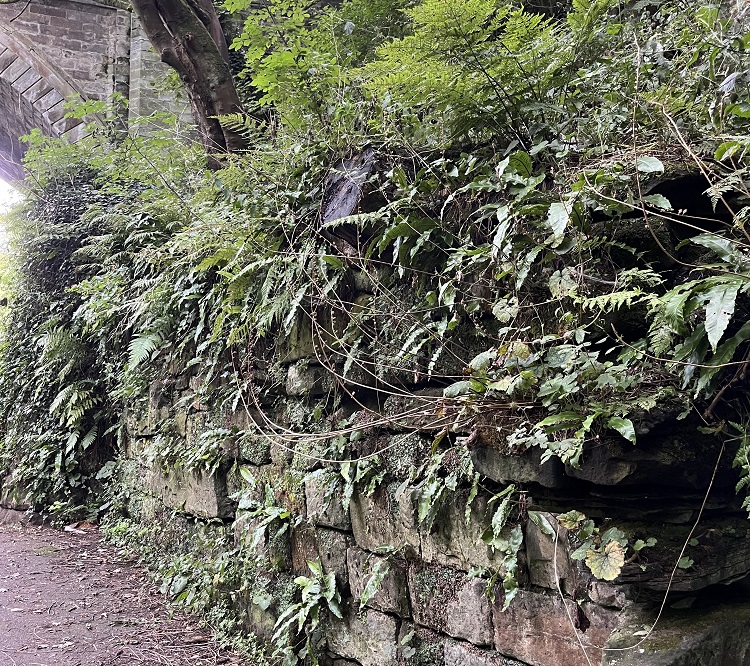Having recently published his research report, Andrew Hoolachan - recipient of a RTPI Early Career Research Grant - reflects on his research process, findings and recommendations below.
Dr Andrew Hoolachan, University of Glasgow
The full report is available at Living with Rain: Planning for Everyday Life in Glasgow - Enlighten Publications
Glasgow: City of stone and green
You’re walking through Glasgow in the height of summer. A heavy rain shower leaves behind a soaked urban street scene; the blonde sandstone tenements glisten while their windows reflect rays of sunlight. All around you is green. Trees, bushes, ferns, mosses, and grasses, bursting out from the seams of stone walls, pavements, cobbled lanes and chimney pots. Exuberant urban nature. People emerge from their makeshift shelters of bus stops, shop awnings or tenement entrances, or they shake down and peel off outer layers. Umbrellas are largely useless here on Europe’s windy edges. This is Glasgow, Britain’s wettest city, a city of stone in a wet temperate rainforest climate with some 1370mm of rain per year.

Ferns, lichens and mosses growing along Glasgow's River Kelvin walkway.
This vegetation (or flora) is typical of the temperate rainforest biome (Credit: Andrew Hoolachan)
Beyond the ‘Sponge City’
Around the world today, planners are rolling out Sustainable Urban Drainage Systems (SUDS) to manage surface water flooding, increase biodiversity, improve air quality, and contribute to placemaking. In this RTPI research project, I sought go beyond SUDs and surface water, to think about how rain affects everyday life in cities: from how we use public space, to how we get around, and how we make plans. Urban planning has the greatest impact on how urban spaces are designed and how the city develops, so I sought to understand how citizens experience urban environments that are both affected by rain, and which are strongly shaped by planning policies and practice.
Policy making and lived reality
I am deeply interested in the implementation gap between the abstract world of policy-making and the messy world of lived reality. As such, I analysed planning policies, spatial strategies, and major projects in Glasgow against the narratives and experiences of citizens using WhatsApp diaries and group walks in the rain.
To help assess Glasgow’s policy and practice, we studied wet cities around the world to develop a qualitative framework by which to evaluate Glasgow. In Cairns we saw a radical imagining of ‘tropical urbanism’ in its development plan, while there were stringent design codes for urban shelter in Vancouver, and tourism and public engagement campaigns about rain in Bergen.
Cities either ignored rain, were managing rain, or truly living with rain. ‘Living with rain’ cities showed how rain is not something to be managed via putting in a few SUDs, but rather is holistically acknowledged and planned for in many aspects of urban life, including public space and urban mobility.

Citizens make their own makeshift bridges in long-term flooded pavements in Cessnock (Credit: Andrew Hoolachan)
Give me shelter
WhatsApp diaries and rainwalks allowed us to access authentic encounters of people’s lives in the city and brought forth issues that we wouldn’t have considered using traditional methods of surveying or sedentary interviews. Many participants on the rainwalks elicited memories of other places, spaces and countries too. Our participants revealed the perennial problems of drowned pedestrian crossings, lack of dry public spaces, workplaces that don’t have changing rooms, and the need for daylight in dark months. They also noted how, on the whole, they are willing to cycle in some rainy conditions, reminding us that Glasgow isn’t ‘too wet’ to cycle in. Many also acknowledged the positive benefits of the rain (within reason) from being uplifted by the fresh earthy smell of the air in urban parks, to feeling ‘cosy’ indoors in winter months when it’s raining outside.
Billy Connolly

Participants of a rainwalk during the study (Credit: Andrew Hoolachan)
A rainbow suite of policies
Overall, Glasgow has a mixed landscape of policies and projects that ‘manage rain’, while others go further to embrace ‘living with rain’. The Heilemann’s umbrella redevelopment, for example, will turn one of Glasgow’s dry public spaces into a more welcoming space to wait out spells of wet weather. Its spatial strategy for the city centre - its ‘Golden Z’ plan - acknowledges Glasgow’s rain in many places. Such awareness of rain is also found scattered through District Regeneration Frameworks for the City Centre.
On the whole though, the city could:
- use deeper and more comprehensive acknowledgement of itself as a rainy city in its City Development Plan, and
- attempt to bring spatial coherence to these disconnected programmes in relation to the experience of rain - as Glasgow is now developing its new City Development Plan, perhaps it’s time for CDP13: Living with Rain!


